Unique Hot Spring Towns: Relax and Unwind in Tohoku's Abundant Hot Springs
Hot spring towns full of character are scattered throughout the Tohoku region, including secluded hot spring villages nestled in the mountains, nostalgic hot springs reminiscent of the Taisho period (1912-1926), along with city-center hot springs that nevertheless offer a natural and relaxing atmosphere.
The unique qualities of onsen (hot spring) water vary widely. If you come to Tohoku, you are sure to find an onsen that is perfect for you.
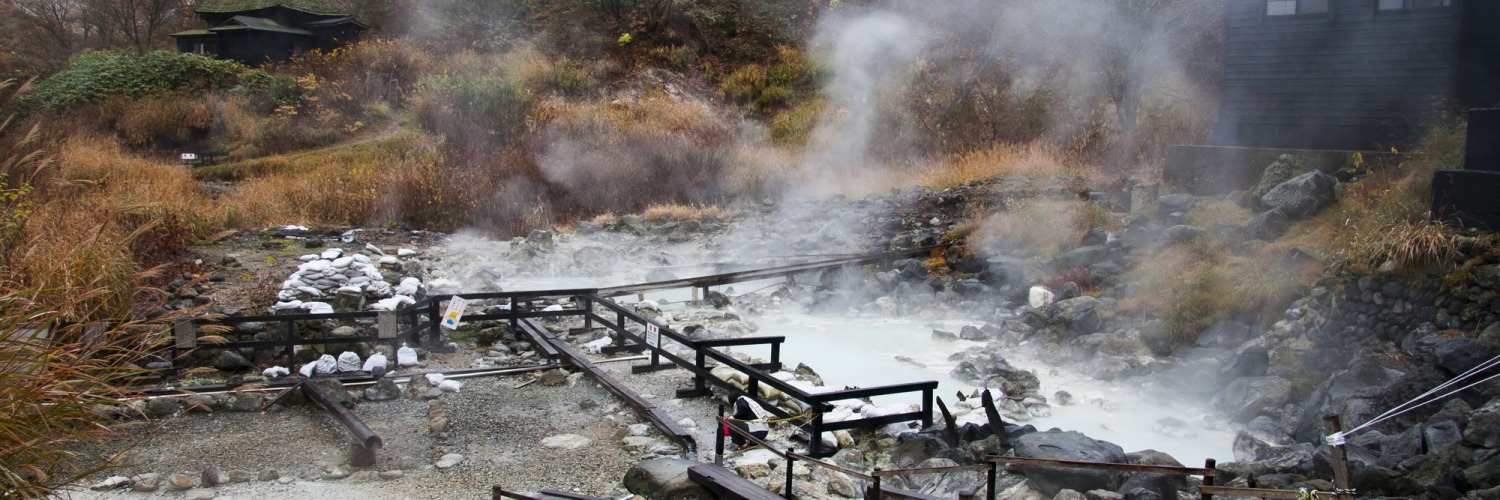
[Akita Prefecture] Nyūto Onsenkyō (Nyūto Hot Spring Village)
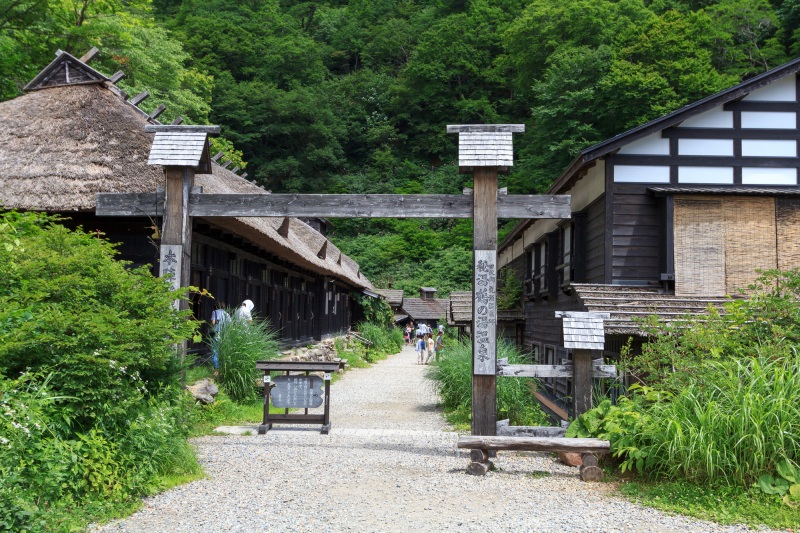
at the foot of the Towada-Hachimantai National Park, where primeval beech trees grow thickly in the forest. Nyūto Hot Spring Village, a well-known hidden hot spring, is home to seven inns, each with its own unique hot spring source, water characteristics, as well as colors and natural ambience.
With the Yumegurichō, a notebook to keep track of which onsens you have visited, you will also receive a bathing ticket for all seven inns and an all-you-can-ride plan for the traveling bus “Yumeguri-go”, which can be purchased only by guests staying overnight in the Nyūto Hot Spring Village. Enjoy the rich and unique hot springs among seven wonderful inns.
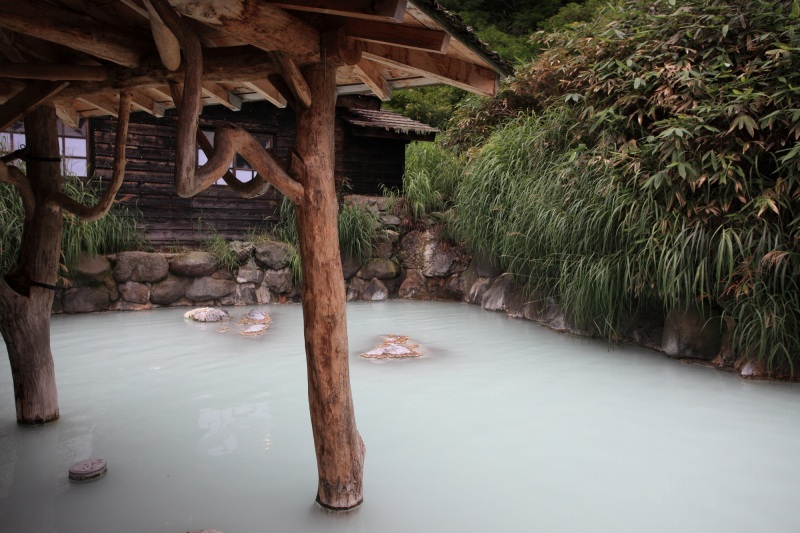
Tsurunoyu Onsen, which originally opened as a medicinal hot-spring for the feudal lord of Akita domain, is said to be the oldest hot-spring inn in Nyūto Hot Spring Village. This feels true in the historic atmosphere of the “Honjin”, a long house with a thatched roof built over 100 years ago. The specialty of Tsurunoyu Onsen is a mixed water open-air bath filled with milky white water. This bath alone contains water from the Kuroyu, Shiroyu, Nakanoyu, and Takinoyu spring sources, thereby allowing you to enjoy several major hot springs at once.
In addition to Tsurunoyu Onsen, Nyūto Hot Spring Village is dotted with other hot springs that are full of the blessings of the earth, such as “Taenoyu” with its modern style and secluded atmosphere and “Kuroyu Hot Spring”, which is surrounded by forests and its gentle, rising steam.
Column
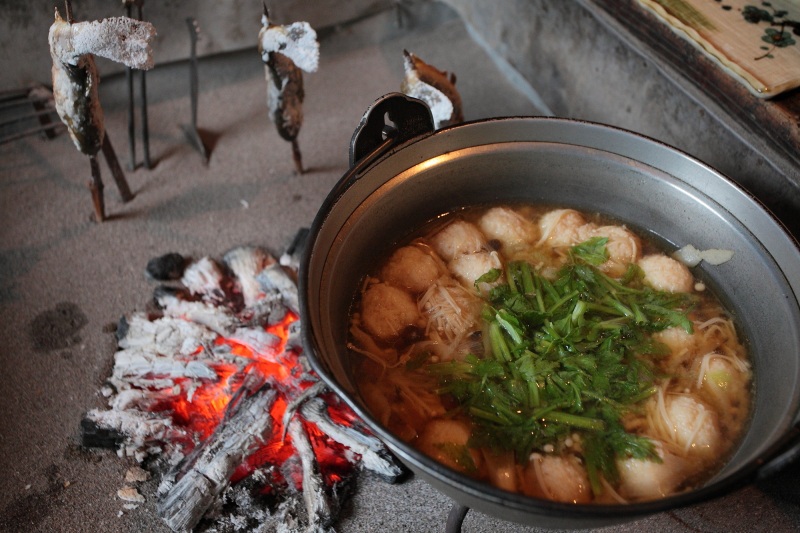
Enjoy Unique Flavors at Inns Deep in the Mountains
When you stay in Nyūto Hot Spring Village, you can look forward to the unique flavors from the base of the mountain, such as dishes with plenty of local wild vegetables, mushrooms, and charcoal-grilled river fish.
Your mind and body will surely be soothed by the heartwarming hospitality in this secluded region.
[Iwate] Hanamaki Onsenkyō (Hanamaki Hot Spring Village)
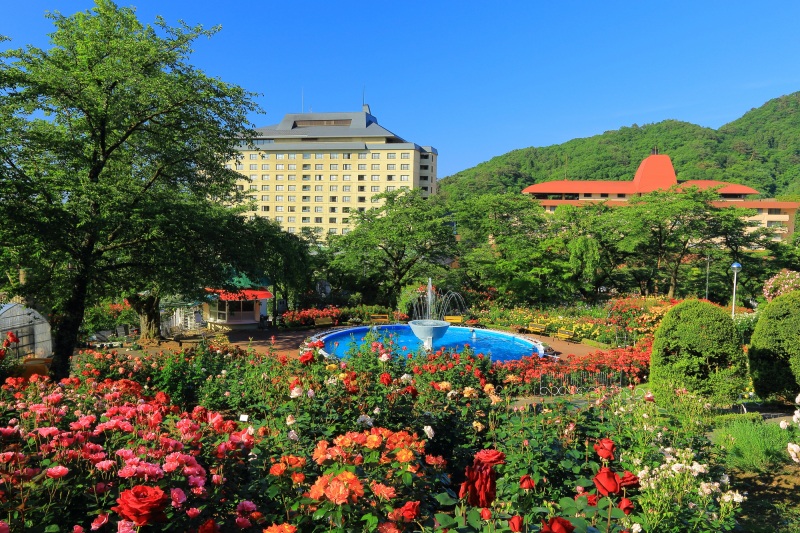
Hanamaki Hot Spring Village consists of twelve different onsen (hot springs) each with different characteristics, including Hanamaki Onsen, Shidotaira Onsen, and Namari Onsen. Visitors can enjoy the wide variety of inns and lodges, from resort hotels to isolated inns, old-fashioned medicinal hot-spring inns and inns associated with Kenji Miyazawa.
Hanamaki Onsen consists of four inns and a hotel, and also features a rose garden that covers an area of about 16,000 square meters where more than 6,000 roses of about 450 species provide color for the four seasons. The charm of Hanamaki Onsen is that you can enjoy a resort-like atmosphere in middle of lush nature.
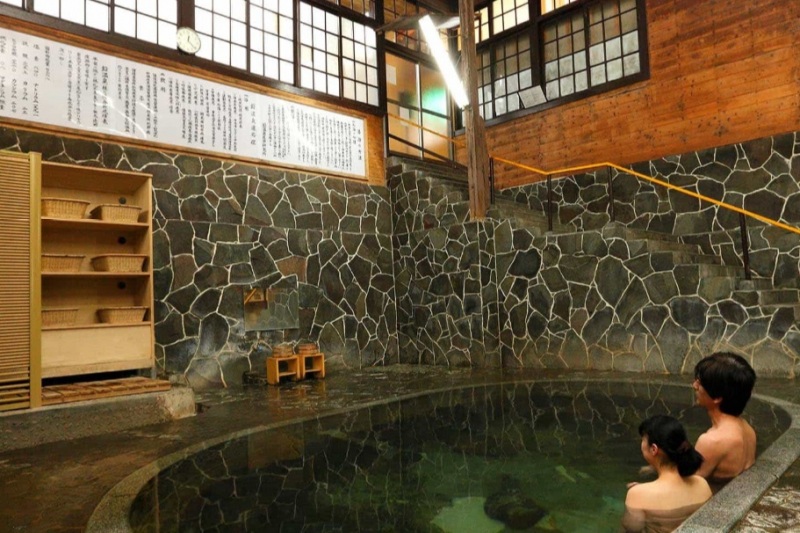
Namari Onsen is home to the “Shirozaru Bath”, which boasts the deepest bath in Japan. Hollowed out of a natural rock, the bath is 125cm deep, deep enough that a small person can hide his or her shoulders in it.
From the bottom of the bathtub gushes invisible fine air bubbles and transparent, 100% fountainhead spring water.
Although it is a mixed gender hot spring, there is also a women-only time slot for women concerned about privacy.
Column
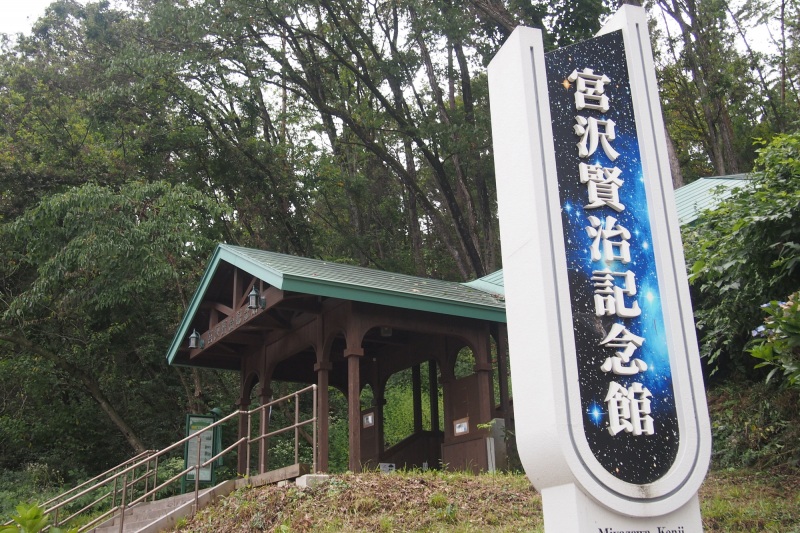
Spots related to Kenji Miyazawa in his birthplace, Hanamaki City
If you are in Hanamaki Onsen, the Kenji Miyazawa Memorial Museum is a 25-minute drive away. The museum introduces the life of the multi-talented Kenji, along with valuable exhibits of items that can only be seen here, such as his beloved cello and manuscripts in his own handwriting. The museum is also a great place to have a meal or buy souvenirs at the “Restaurant of Many Orders, Wildcat House”.
There are other places in Hanamaki City as well, such as the Kenji Miyazawa Fairy Tale Village, where you can enjoy learning about Kenji’s fantasy world. Follow in Kenji's footsteps and immerse yourself in the world of Ihatov.
[Miyagi] Akiu Onsenkyō (Akiu Hot Spring Village)
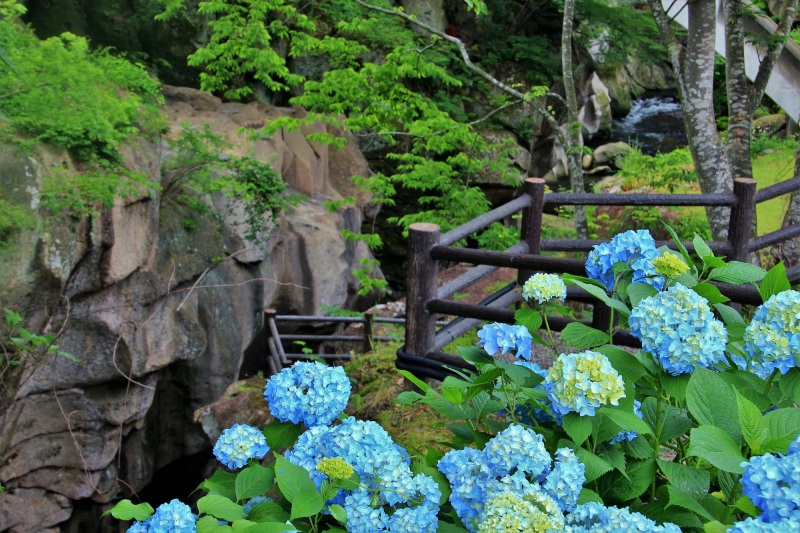
The Akiu Hot Spring Village has been in operation for 1,500 years and is known as the “inner sanctuary of Sendai”. It has been loved by successive lords of Sendai domain, including Lord Masamune, as a dedicated hot spring for the Date clan. Along with Nozawa Onsen and Bessho Onsen in Nagano Prefecture, Akiu is one of the best “Three Hot Springs of Japan”.
The area is also only 30 minutes by car from the center of Sendai City. Around the hot spring area is Rairai Gorge, a ravine with rough rocks stretching for about 1km, where you can enjoy strolling through the stark scenery of huge rocks and waterfalls. There are also places where you can experience making kokeshi dolls, a kaleidoscope museum, a glass studio, a cafe in a renovated old house, and a winery.
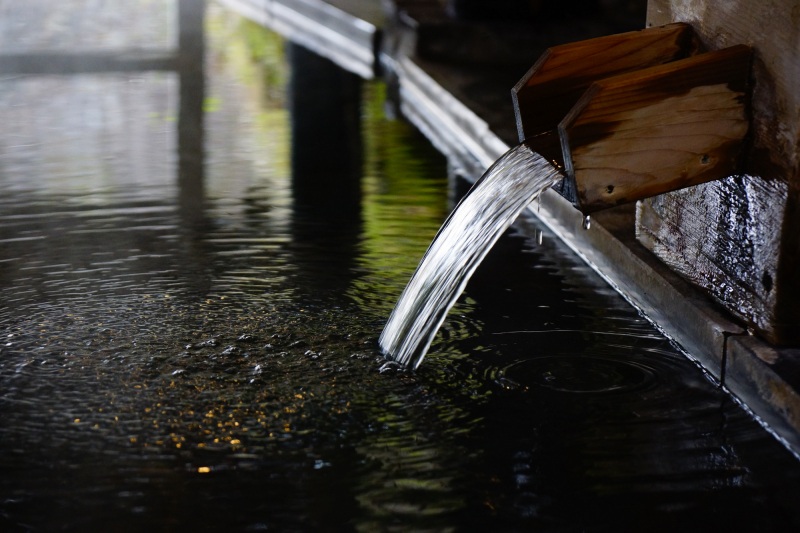
The quality of the spring water in the Akiu Hot Spring Village is transparent and colorless, tasteless, odorless, and soft to the skin. It contains salt similar to the composition of seawater, which prevents sweat from evaporating, so you will feel warm even after taking a bath.
Most of the inns in the hot spring village offer day trip hot springs as well as plenty of footbaths and public bathhouses. There are also buses that take you directly from the center of Sendai to the hot spring village, making it a good place to stop by during your sightseeing tour of other places in Sendai.
Column
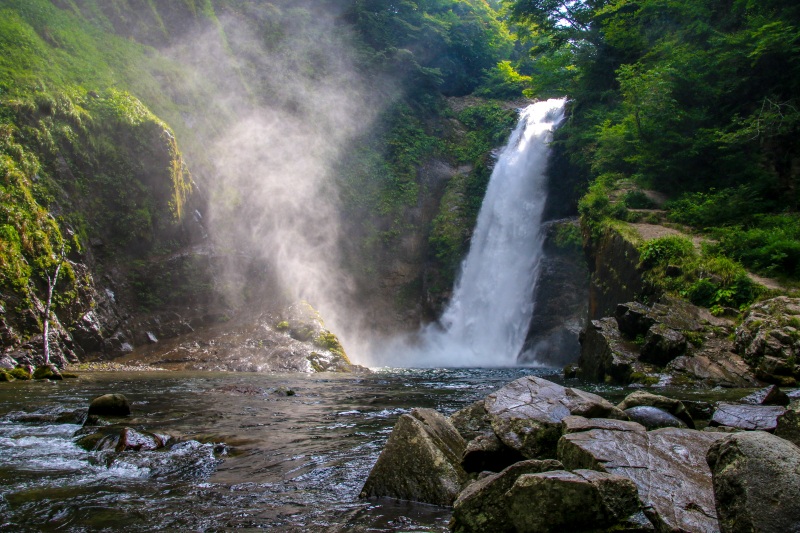
Recommended Stop: Akiu Ōtaki Waterfall
Akiu Ōtaki Waterfall is a 20-minute drive from the Akiu Hot Spring Village. The waterfall, with a height of 55 meters and a width of 6 meters, is a breathtaking sight with a roaring sound. It is one of the most famous waterfalls in Japan and is designated as a “National Scenic Spot” and one of the “Three Greatest Waterfalls in Japan”. In addition to the waterfall-viewing platform, there is a walking trail leading to the waterfall basin, where you can feel its power up close. We also recommend visiting during the autumn foliage season, when the contrast between the rock surface, waterfall, and autumn leaves is spectacular.
[Yamagata Prefecture] Ginzan Onsen (Ginzan Hot Spring)
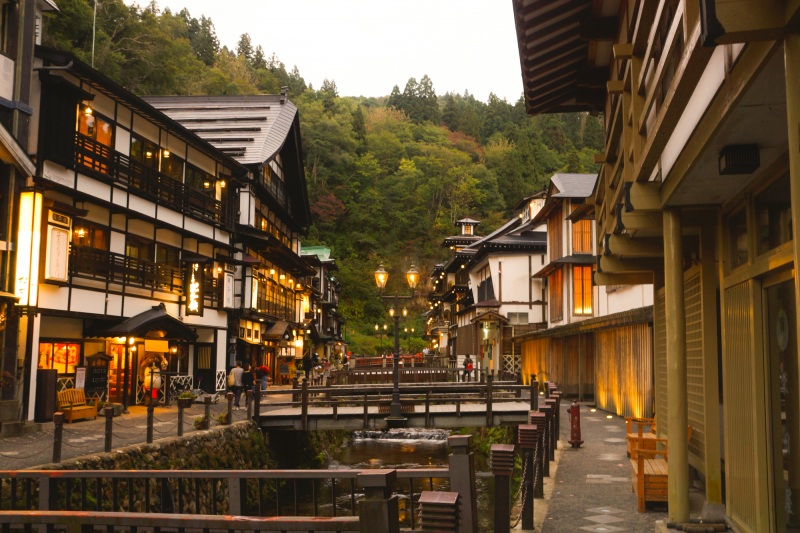
Ginzan Hot Spring is brimming wooden inns built between the Taisho (1912-1926) and Showa (1926-1989) periods, with a blend of Japanese and Western styles, along the Ginzan River. There are no roads or powerlines in the hot spring area. The scenery of the promenade, the river, and the Taisho retro-style inns is like a trip back in time.
At dusk, the bridge over the Ginzan River and the stone-paved pathways, which still retain the atmosphere of the Taisho era, are illuminated by gas lamps, adding to the nostalgia. It is so exceptionally beautiful that just standing there makes you feel as if you are the main character in a movie.
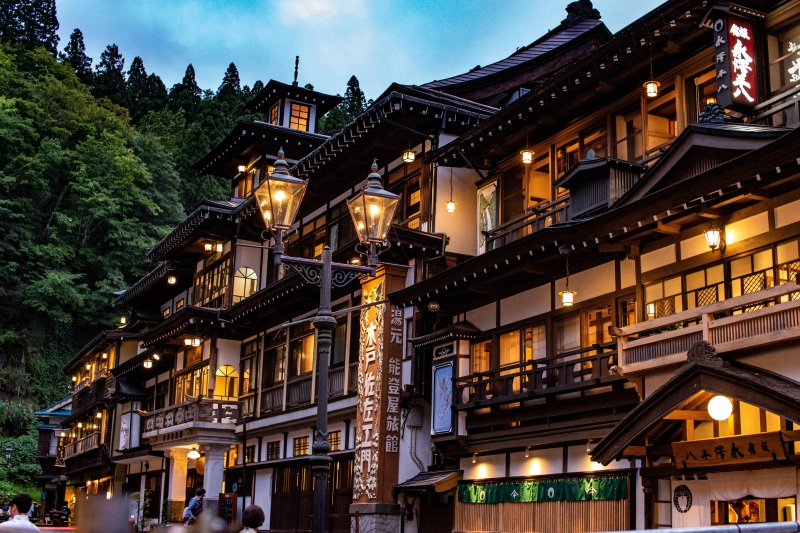
When you come to Ginzan Hot Spring, enjoy strolling around the hot spring village while surrounded by the ambience of a bygone era.
Many of the inns and stores in Ginzan Hot Spring are decorated with painted ("kote-e") plaster reliefs on their signboards and walls.
The stone-paved streets feature footbaths, cafes, and souvenir stores. You can also rent retro kimonos and hakama reminiscent of Taisho romanticism at various shops.
Column
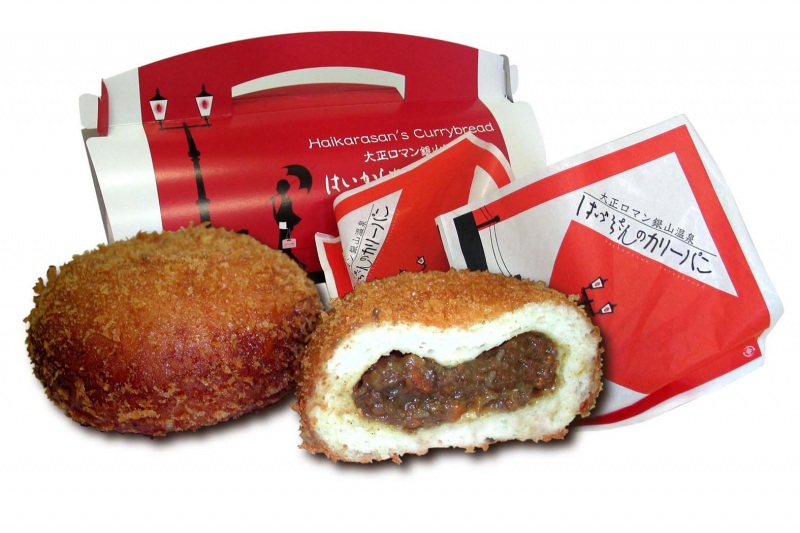
Ginzan Hot Spring's Famous Food Item: Curry Bread
The sticky dough of these hot buns is made of "Nebarigoshi" wheat from Yamagata Prefecture and is filled with spicy curry. The freshly fried curry buns eaten at the store are characterized by their hot curry and crispy texture, a nostalgic taste perfect for the retro hot spring resort. (210 yen per piece)
[Fukushima Prefecture] Higashiyama Onsen (Higashiyama Hot Spring)
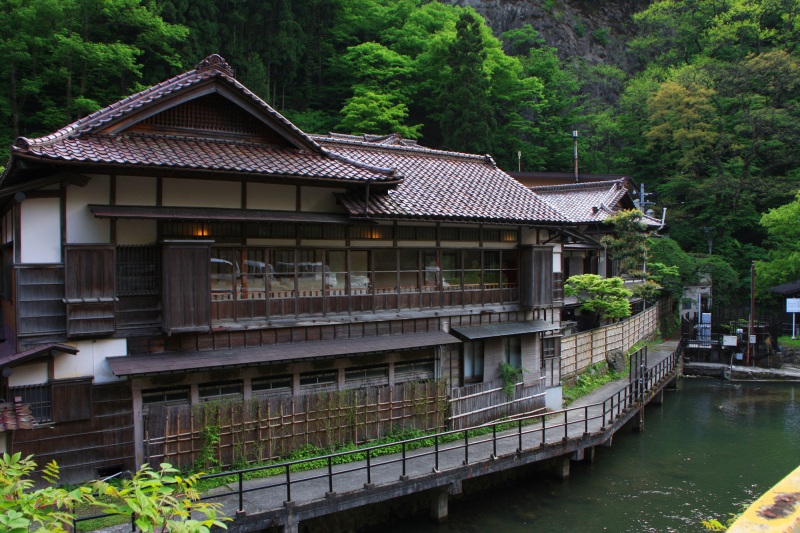
Higashiyama Hot Spring is only a 10-minute drive from the center of Aizuwakamatsu City, and yet it offers a rich natural environment and hot springs to enjoy. Higashiyama Hot Spring has a long history; it is said to have been discovered about 1,300 years ago by Gyoki, the monk who built the Great Buddha of Tōdaiji Temple in Nara. It is also famous as a hot spring loved by famous people associated with Aizuwakamatsu, such as Toshizo Hijikata of the Shinsengumi, Hirobumi Ito (first Prime Minister of Japan), and feminist poet Akiko Yosano.
The sulfate spring is said to be effective in treating rheumatism, menopausal disorders, hypertension, and is characterized by its smooth, colorless, odorless water. Many lodgings are available where you can enjoy a day trip to the hot spring, so we recommend stopping by after sightseeing in Aizuwakamatsu City.
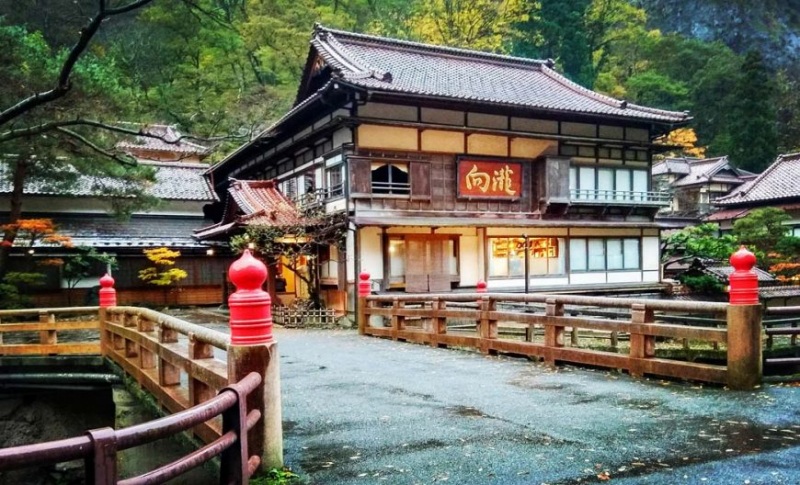
The hot spring village is lined with more than 20 inns along the Yugawa River, which flows through a series of waterfalls both large and small.
Mukaitaki is a long-established ryokan (traditional inn) with a history of being used as a recreational facility for the feudal lords of Aizu. It is also the first ryokan to be designated as a nationally registered tangible cultural property. The traditional wooden sukiya-style architecture is wonderful, and the view from the other side of the Yugawa River of its elegant appearance is one of the most famous views of Higashiyama Hot Spring.
Column
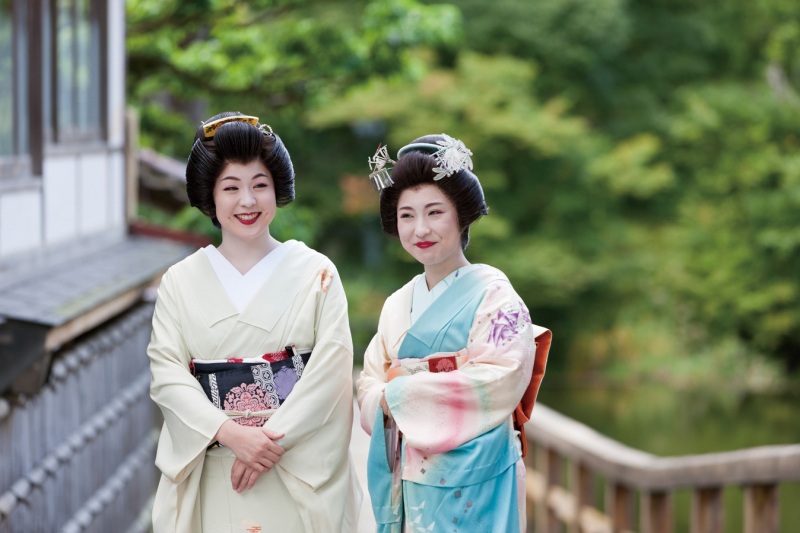
Aizu's Hospitality: Passed Down the Generations
Higashiyama Hot Spring has a long history of Higashiyama Geiko (female entertainers), and entertainment tradition that dates to the Edo period (1603-1868). The unique customs and entertainment traditions born from their long history have been passed down the generations, their dances and other performances conducted gorgeously in unison with songs and accompaniment at celebratory banquets.
If you make a reservation at a hotel or ryokan, you can enjoy the gorgeous performance of Higashiyama Geiko.